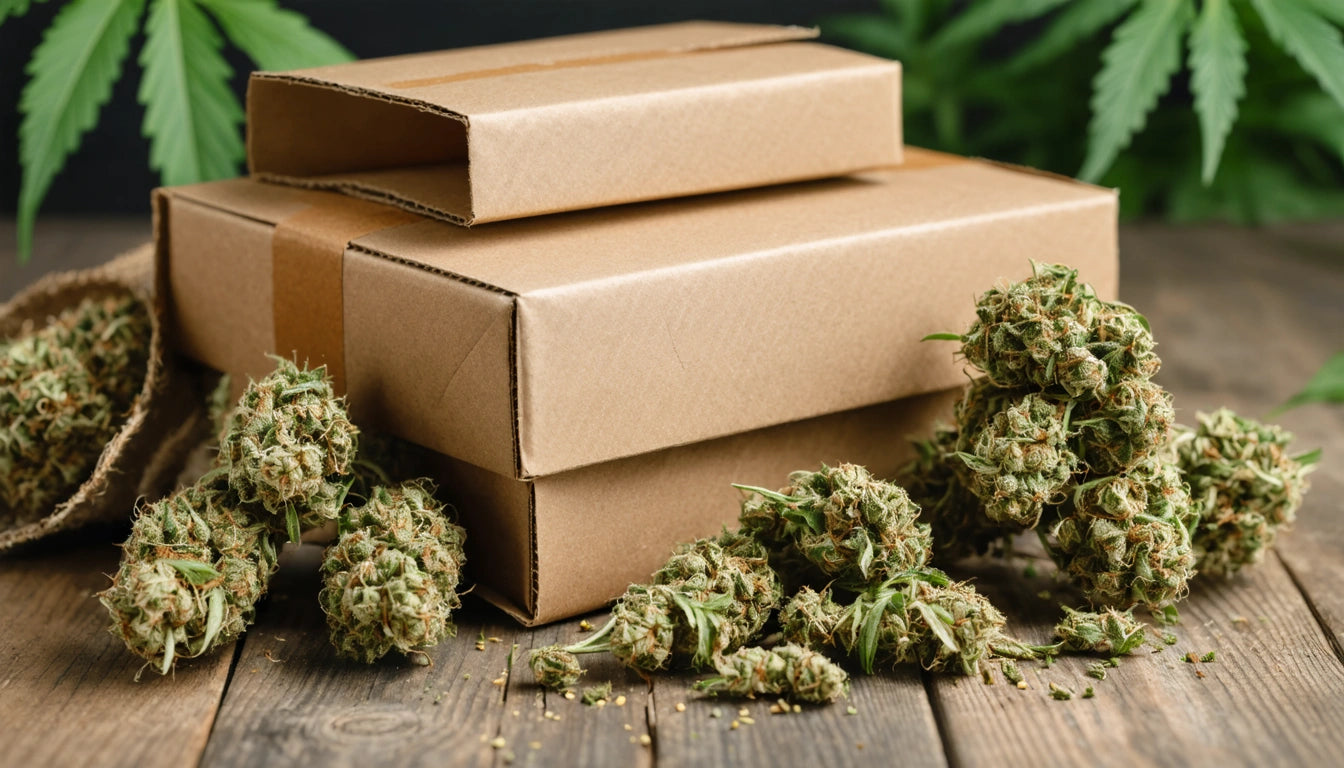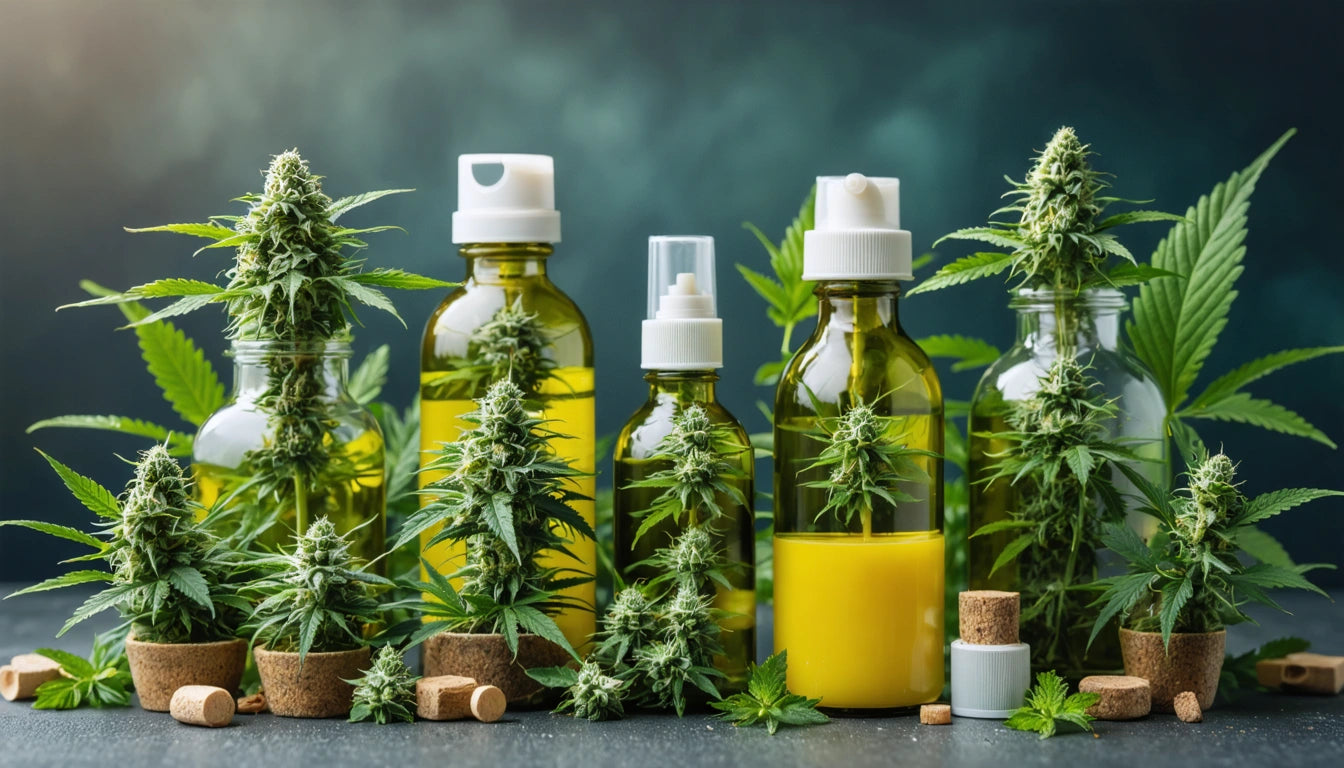Hemp Packaging vs Recycled Kraft: Which Is Greener?
The cannabis industry faces growing pressure to adopt sustainable packaging solutions as consumers become more environmentally conscious. Two popular options, hemp-based packaging and recycled kraft materials, both claim green credentials but offer different sustainability profiles. Understanding these differences helps brands make informed decisions that align with both environmental goals and business requirements.
Environmental Profiles of Hemp and Recycled Kraft
Hemp packaging derives from the Cannabis sativa plant, specifically industrial hemp varieties grown for fiber rather than cannabinoid content. According to research on hemp packaging sustainability, hemp grows rapidly with minimal pesticides and can yield four times more paper per acre than trees.
Recycled kraft, meanwhile, comes from post-consumer paper products processed and repurposed into new packaging. This approach diverts waste from landfills and reduces demand for virgin materials. The recycling process typically uses less energy and water than creating new paper products, though it does require chemical processing to remove inks and contaminants.
Production Processes and Carbon Footprint
Hemp Production Impact
Hemp cultivation offers several environmental advantages:
- Requires minimal pesticides and fertilizers
- Grows quickly (120 days from seed to harvest)
- Sequesters carbon effectively during growth
- Improves soil health through phytoremediation
However, processing hemp fibers into packaging materials requires significant energy and water. The truth about biodegradable hemp plastic reveals that manufacturing hemp-based materials often involves chemical processing that can offset some environmental benefits.
Recycled Kraft Production
Recycled kraft production has its own environmental profile:
- Reduces landfill waste and forest impact
- Typically uses 40% less energy than virgin paper production
- Produces fewer air pollutants than virgin paper manufacturing
- Requires water and chemicals for de-inking and processing
The environmental advantage of recycled kraft lies in its closed-loop potential, where materials can be recycled multiple times before fiber degradation becomes problematic.
Practical Applications in Cannabis Packaging
Both materials serve different packaging needs in the cannabis industry. Hemp excels in rigid container applications where biodegradability is prioritized. The top hemp packaging formats include flower containers, pre-roll tubes, and custom boxes.
Recycled kraft works well for secondary packaging, labels, and outer boxes. Its established recycling stream makes it convenient for consumers to dispose of properly. For cannabis brands looking to ensure proper sealing and preservation, complementary components like secure jar caps and child-resistant closures can be paired with either material to maintain product freshness and compliance.
Regulatory Compliance and Market Acceptance
Regulatory considerations often influence packaging choices. Hemp-derived packaging must meet the same safety and child-resistance standards as conventional materials. Hemp packaging compliance with CR and FDA requirements remains an evolving area, with manufacturers working to achieve necessary certifications.
Market acceptance varies by region and consumer segment. Consumer demand for hemp packaging shows regional variation, with environmentally conscious markets showing stronger preference. Recycled kraft benefits from widespread consumer familiarity and established recycling infrastructure.
Cost Considerations and Scalability
Cost remains a critical factor for cannabis brands evaluating packaging options. Hemp packaging typically commands a premium price due to limited production scale and specialized manufacturing processes. The economics of hemp-based packaging improve as production scales, but currently, hemp options often cost 15-30% more than conventional alternatives.
Recycled kraft presents a more economical option with established supply chains and manufacturing processes. Its cost typically falls between virgin paper products and premium sustainable alternatives like hemp. For brands balancing sustainability goals with budget constraints, recycled kraft often provides an accessible entry point.
Making Informed Sustainability Choices
When deciding between hemp and recycled kraft packaging, cannabis brands should consider:
- Local recycling infrastructure and consumer behavior
- Product protection requirements and shelf life
- Brand positioning and sustainability messaging
- Budget constraints and volume requirements
- Full lifecycle environmental impact
As this analysis of hemp packaging points out, sustainability claims require nuanced evaluation. The greenest choice varies based on specific circumstances, including regional energy sources, transportation distances, and end-of-life management options.
For many brands, a hybrid approach proves most effective, using recycled kraft for outer packaging and labels while reserving hemp-based materials for specific applications where their properties provide distinct advantages. This balanced strategy allows companies to optimize both environmental impact and practical business considerations while meeting evolving consumer expectations for sustainable packaging.











Leave a comment
All comments are moderated before being published.
This site is protected by hCaptcha and the hCaptcha Privacy Policy and Terms of Service apply.